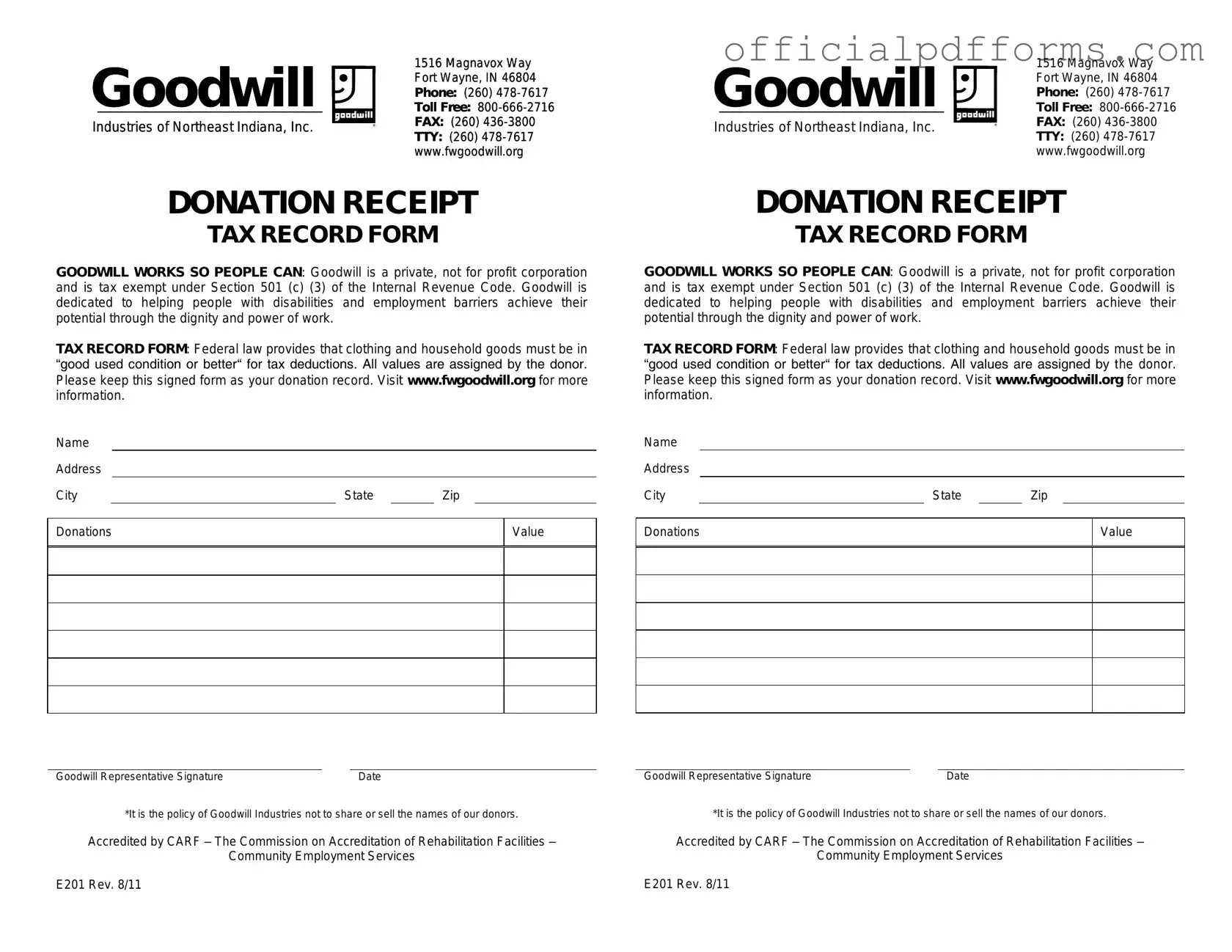A Goodwill donation receipt form is a document provided to individuals who donate items to Goodwill Industries. This form serves as proof of the donation for tax purposes. It typically includes details such as the donor's name, the date of the donation, a description of the items donated, and an estimated value of those items. Having this receipt can be beneficial when filing taxes, as it may allow donors to claim a charitable deduction.
How do I obtain a Goodwill donation receipt?
When you make a donation to Goodwill, you will receive a donation receipt at the time of your contribution. This can occur at a physical Goodwill store or donation center. Simply ask an employee for the receipt, and they will provide you with one. If you forget to ask for it, you can also check the Goodwill website or contact your local Goodwill location for guidance on how to obtain a duplicate receipt.
Can I claim a tax deduction for my Goodwill donations?
Yes, you can claim a tax deduction for your Goodwill donations, provided you itemize your deductions on your tax return. To do this, you must have a valid receipt, which details the items donated and their estimated value. Keep in mind that the IRS requires you to have documentation for any donations over a certain amount. For donations exceeding $500, additional forms and documentation may be necessary, such as a qualified appraisal for high-value items.
What items can I donate to Goodwill?
Goodwill accepts a wide variety of items, including:
-
Clothing and shoes
-
Household goods and small appliances
-
Furniture
-
Toys and games
-
Books and media
However, there are some restrictions. Goodwill does not accept items that are damaged, broken, or heavily soiled. Additionally, hazardous materials, such as paint or chemicals, are also prohibited. It’s always best to check with your local Goodwill for specific guidelines regarding acceptable donations.
